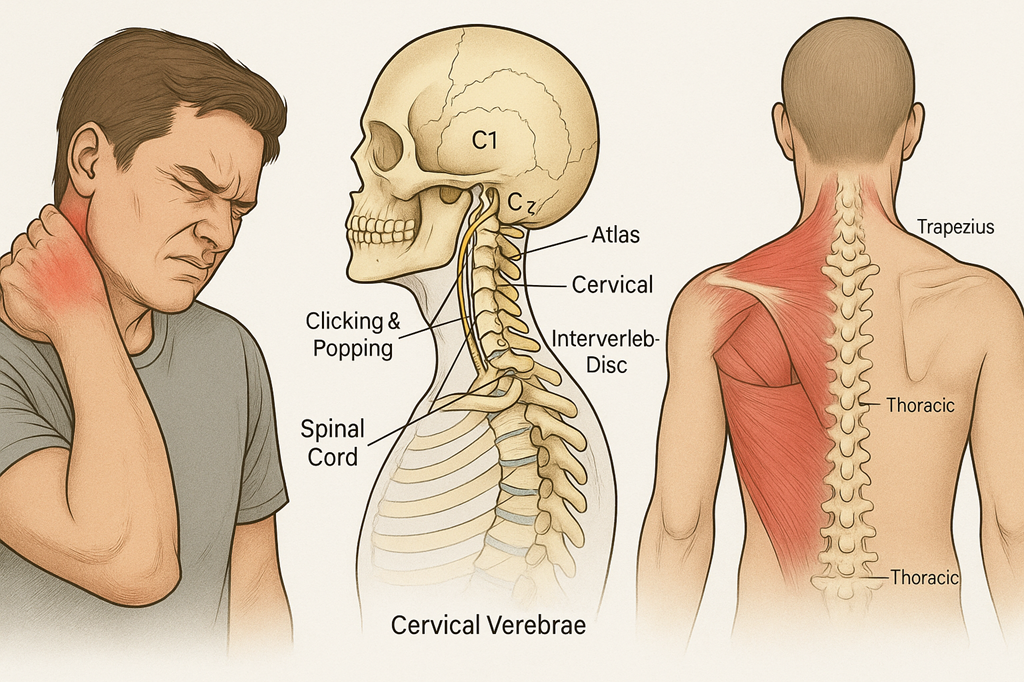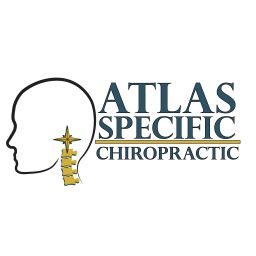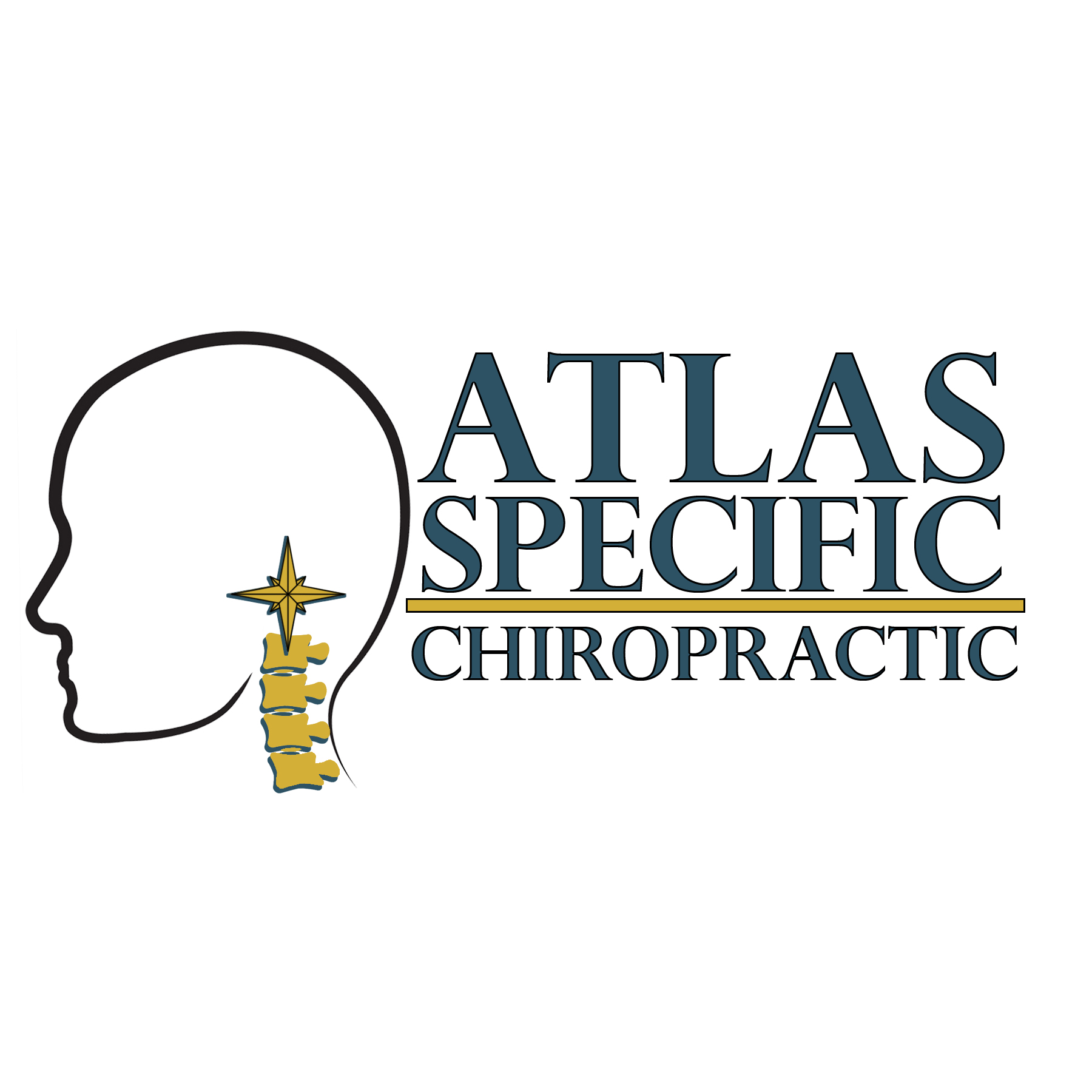


Neck Pain
Understanding Neck Pain, Clicking & Popping (Crepitus), and How Upper Cervical Care Helps
Why Neck Pain Happens
Neck pain is one of the most common reasons people seek care, but it’s also one of the most misunderstood. The neck is made up of seven cervical vertebrae, dozens of muscles, and a complex network of nerves that control movement, balance, posture, and even blood flow to the head.
When something in this system becomes irritated or misaligned — especially the upper cervical spine — symptoms can spread quickly to surrounding areas, including the shoulders, trapezius muscles, and upper back.
Many patients experience:
-Stiffness or reduced range of motion
-Sharp or aching pain
-Pain that radiates into the shoulders or upper back
-Headaches or dizziness along with neck pain
-Clicking, cracking, popping, or grinding sounds with movement
These symptoms often have a root cause that goes deeper than tight muscles.
Clicking, Popping & Grinding: What Is Neck Crepitus?
The clicking, crackling, or grinding sound you hear in your neck is known as crepitus. While it can sound concerning, it’s a sign that something is not moving or stabilizing correctly.
Crepitus often occurs when:
-The joints of the neck are misaligned
-Muscles and ligaments are strained or imbalanced
-The atlas (C1) or axis (C2) vertebrae shift out of position
-The cartilage or joint surfaces are not gliding smoothly
-Gas bubbles release within the joints due to abnormal motion patterns
Crepitus is not always dangerous, but when paired with pain, stiffness, headaches, or shoulder tension, it signals a mechanical issue that needs attention.
Upper cervical care works to restore proper joint mechanics so the grinding and clicking reduce naturally as alignment improves.
Why Neck Problems Lead to Shoulder & Trapezius Pain
The neck does not exist in isolation. The trapezius, levator scapulae, and upper back muscles all attach to the cervical spine. When the atlas or axis is misaligned:
Muscle Imbalance Begins
The body compensates by tightening certain muscles — usually the trapezius, rhomboids, levator scapulae, and suboccipitals — in an attempt to stabilize the head.
Shoulder & Upper Back Pain Develop
These tight, overworked muscles pull on the shoulder blades and upper back, leading to pain, stiffness, or burning sensations.
Posture Begins to Shift
Forward-head posture increases strain on the neck and upper back, creating even more tension and joint stress.
Nerve Irritation Can Radiate Pain
Misalignment in the upper cervical spine can irritate nerves that travel into the shoulders, arms, and upper back, creating widespread discomfort.
This is why many patients describe neck pain that “turns into” shoulder pain or upper back tension.
How Upper Cervical Misalignment Contributes to Neck Pain
The top two bones in your neck — C1 (atlas) and C2 (axis) — protect the brainstem and support the weight of the head. When they slip even a few millimeters out of position, the entire neck structure must compensate.
This can lead to:
-Muscle spasms
-Joint irritation
-Crepitus (clicking/popping)
-Nerve pressure
-Reduced blood flow
-Headaches and dizziness
-Shoulder and upper back tension
-Postural misalignment
Upper cervical misalignment often develops from:
-Whiplash
-Concussions
-Sports injuries
-Poor posture
-Long hours at a desk
-Sleeping wrong
-Stress
-Previous injuries that never fully healed
Because the misalignment starts at the top, the rest of the spine must twist, tilt, or tighten to keep the eyes level — creating the pain patients feel lower in the neck or upper back.
How Upper Cervical Chiropractic Helps
At Atlas Specific Chiropractic, we focus on correcting the alignment of the atlas and axis with extraordinary precision.
✔ Functional Neurological Scans
Tytron thermography shows areas of nerve irritation that often correlate with neck pain, shoulder tension, and crepitus.
✔ 3-View Precision X-Rays
We measure your exact misalignment to 1/100th of a degree and millimeter.
✔ Gentle AHKC (Advanced HIO Knee-Chest) Correction
We use a precise, non-invasive adjustment that restores alignment without twisting, cracking, or popping.
✔ Stabilization & Healing
When the atlas is corrected and the nervous system begins to function properly again, the neck can relax, the shoulders can balance, and the upper back can loosen naturally.
Patients often report:
-Less clicking/popping
-Improved range of motion
-Reduced shoulder and trapezius tension
-Better posture
-Clearer head and improved energy
-Fewer headaches and fewer flare-ups
Signs Your Neck Pain Is Upper Cervical in Origin
You may be experiencing an atlas/axis issue if you notice:
-Neck pain that comes and goes
-Sharp pain when turning your head
-Frequent cracking or grinding sensations
-Pain radiating into the shoulders or upper back
-Headaches or dizziness with neck pain
-Tension in the trapezius muscles
-Difficulty holding your head up
-Poor posture or fatigue from sitting
These symptoms strongly suggest a structural imbalance at the top of the spine.
Lasting Relief Begins at the Top
Neck pain doesn’t have to control your life. When alignment is restored, the muscles relax, joints move smoothly, and your nervous system returns to a calmer, more balanced state.
At Atlas Specific Chiropractic in Hiawatha, Iowa, we help patients across the Cedar Rapids area find lasting relief from neck pain, crepitus, shoulder tension, and upper back discomfort — all through gentle, precise upper cervical care.
📞 Call (319) 343-8540 or schedule your first visit today to start your recovery.
Open Hours
Monday, Tuesday, Thursday
9:00 - 6:00
Wednesday
12:00 - 6:00
friday
9.00 - 2.00
© Atlas Specific Chiropractic | Powered by Webflow.




